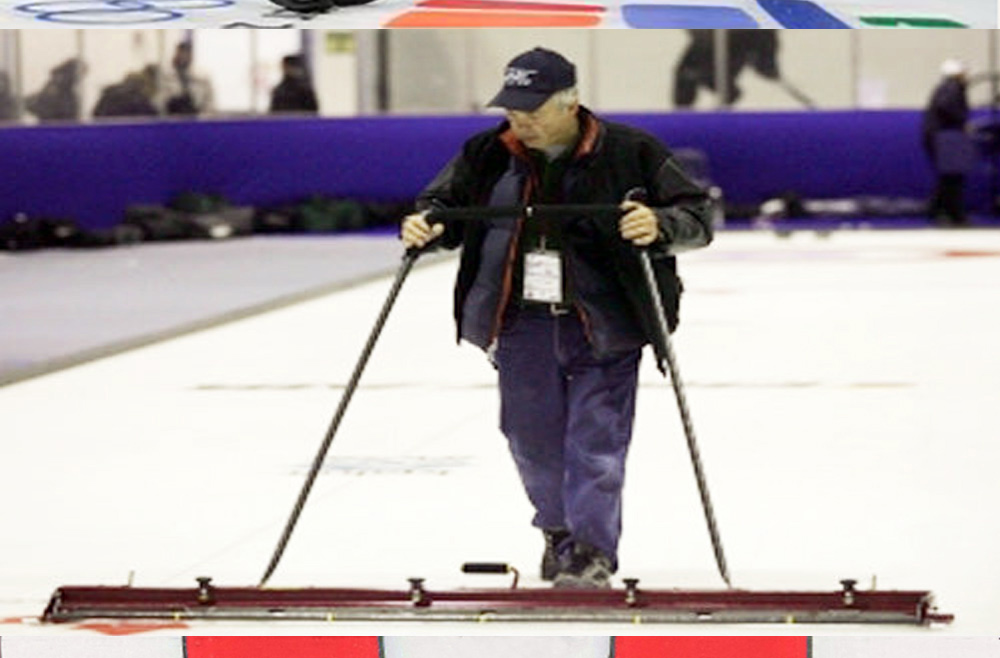Curling is an international, Olympic sport that is a challenge of both skill and strategy. If you search the Internet, you’ll find videos describing the immense amount of care that goes into preparing the ice surface.
Not surprisingly, the concepts of sliding friction are at the heart of the matter. Contrary to appearance, neither the surface of the stone nor the surface of the ice are polished smooth and flat. In fact, a flat, polished stone on flat, polished ice would not slide well at all because the real area of contact would be quite high.

Instead, curling stones are polished to slide on a thin, symmetric outer ring of the rock for the most predictable movement. The ring is also sanded with a particular pattern to give it better traction.
Likewise, the ice surface is prepared with extreme care, layer after layer, to create the most level, even surface possible. Before the event, the surface is texturized with a spray of water to “pebble” the ice, and the tops of the pebbles are “nipped” to create a surface with the optimal friction.
In surface texture terms, all of the spatial wavelengths of the texture are addressed to optimize friction. The overall levelness and “form” are addressed with dozens of applications of water. The mid spatial wavelengths are addressed in the shape of the stone, and the pebbling and scraping of the ice optimizes the short-spatial-wavelength roughness.
As to why the stone curls…there are many theories. One is that the texture in the stone itself interacts with the pebbling, creating preferential marks on the ice that cause the stone to move left or right. Whether this ultimately proves to be the dominant physical force, it should at least make the sport interesting for tribologists everywhere!
Check out https://www.scienceworld.ca/stories/curling-rocks/ for more.
Want to know more about friction? The Dry/ Sliding Friction module from our full Surface Texture and Tribology short course provides an introduction to our understanding of basic friction, which we build on in our subsequent modules on rolling and lubricated friction.
Note: we had a chance to talk with Russell Frank, a curler and ice technician, as a follow-on to this article. Read the blog post here!
